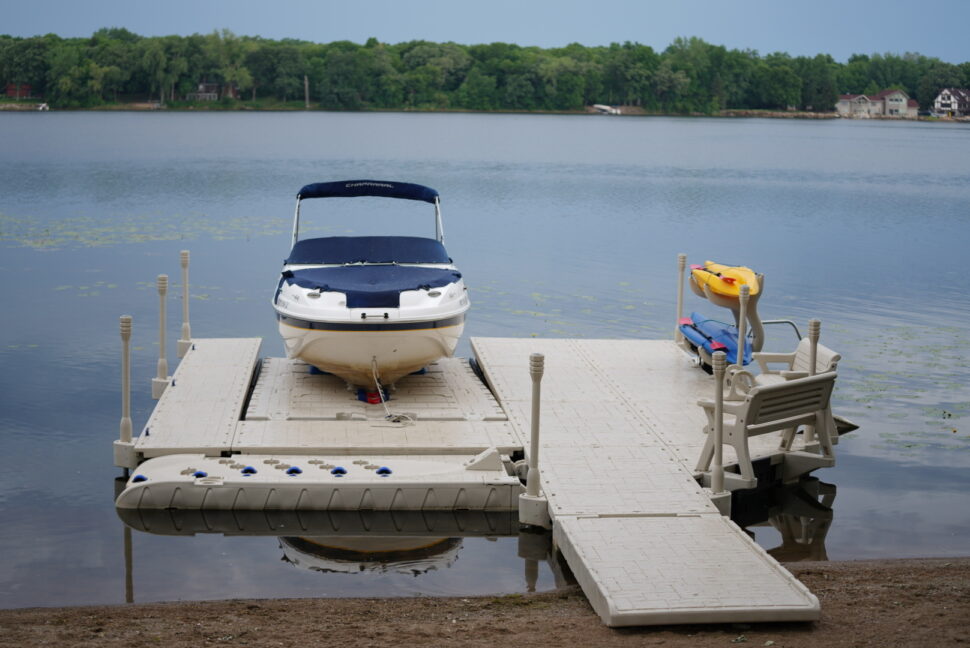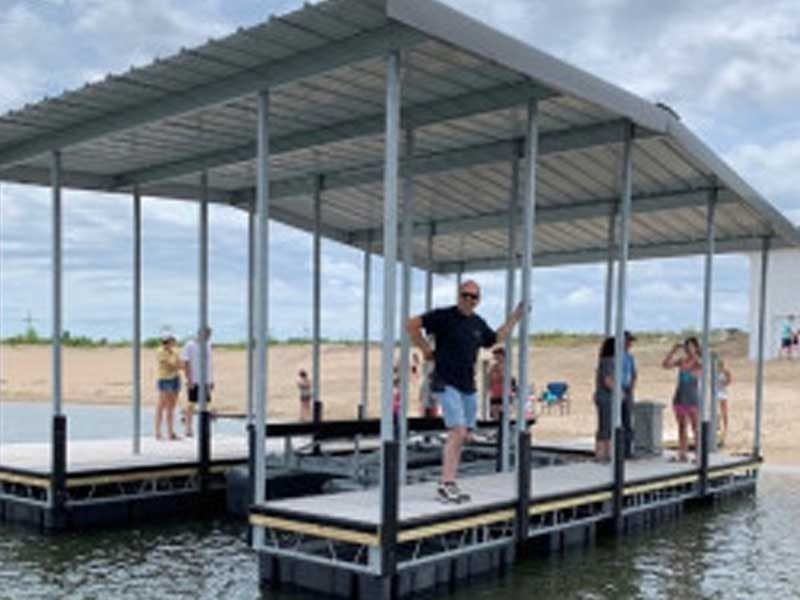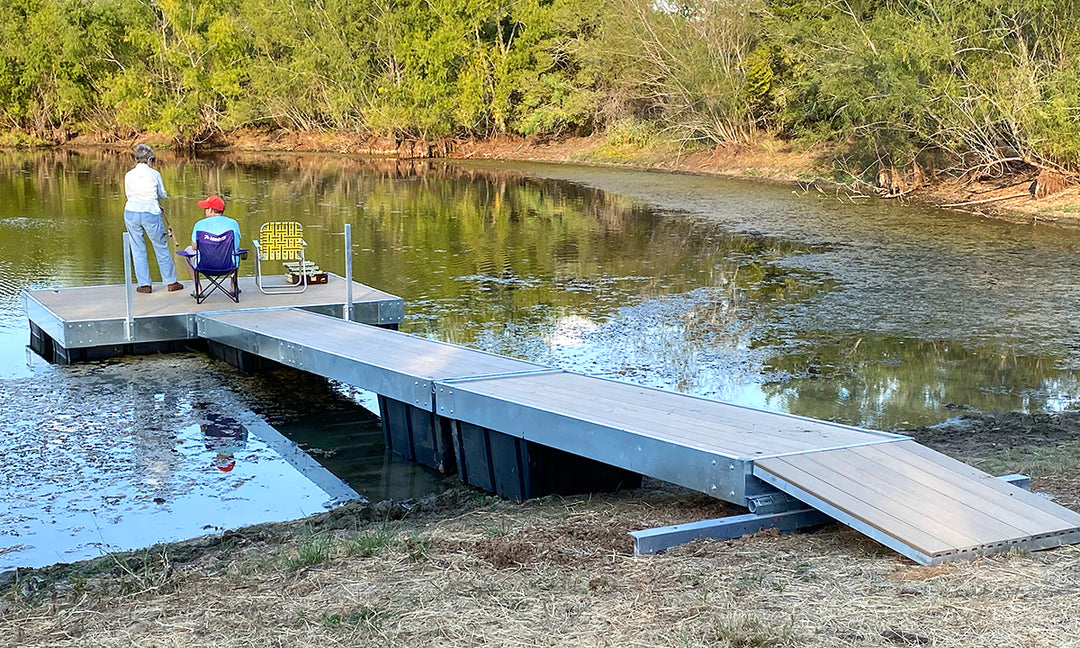How to Select the Right Floating Dock Builder for Your Customized Dock Needs
The Ultimate Guide to Selecting the most effective Floating Docks
Selecting the optimal floating dock requires an extensive understanding of various components that influence both efficiency and long life. Elements such as dock types, materials, and vital functions significantly affect your decision-making process.
Understanding Floating Dock Types
When picking a floating dock, it is necessary to comprehend the numerous kinds offered, as each serves distinctive purposes and applications. Floating docks largely drop into three categories: modular, stationary, and pontoon docks.
Modular docks are composed of private sections that can be conveniently constructed or reconfigured, making them ideal for changing water levels and varied uses, such as entertainment activities or business operations. Their versatility permits customization based upon details needs.

Pontoon docks are identified by their buoyant framework, usually composed of multiple pontoons that offer security and assistance. They are particularly appropriate for larger vessels and are frequently made use of in marinas or for beachfront residential or commercial properties. Understanding these kinds help in choosing one of the most appropriate floating dock to fulfill certain needs, making sure optimal functionality and safety and security.
Secret Products for Resilience
Picking the right products for floating docks substantially effects their durability and longevity. The most typical products consist of wood, plastic, metal, and composite materials, each offering distinct benefits and constraints.
Timber, usually favored for its visual appeal, requires normal upkeep to endure moisture and decay. Pressure-treated lumber can boost resistance to rot, yet it may still be at risk to parasites and weathering.

Plastic docks, made of high-density polyethylene (HDPE), are resistant to corrosion, UV radiation, and influence, making them a preferred choice for seaside atmospheres. Their light-weight nature additionally assists in easy installment and relocation.
Metal docks, normally created from aluminum or galvanized steel, give outstanding strength and longevity. They are immune to corrosion, specifically when treated, yet might call for extra insulation to stop heat buildup in hot climates.
Composite products, combining timber fibers and plastics, deliver the advantages of both timber and plastic, withstanding wetness and fading while needing very little maintenance. - floating docks
Eventually, the choice of products must straighten with environmental problems, planned usage, and upkeep preferences to make sure the floating dock remains functional and visually pleasing gradually.
Necessary Functions to Take Into Consideration
While the choice of materials is essential, taking into consideration important functions for floating docks is similarly important to make certain optimal efficiency and individual contentment. One essential function to assess is the dock's buoyancy capability, which determines just how much weight it can support without submerging. floating dock company. This is essential for accommodating watercrafts, personal watercraft, and even leisure great post to read tasks
Additionally, transportability is a significant consideration. Depending upon your needs, you may desire a dock that is easy to disassemble and move, specifically if you prepare to relocate it seasonally. Security is another important attribute; a properly designed floating dock should lessen activity brought on by wind and water currents, offering a secure platform for users.
Security features, such as non-slip surface areas and rounded edges, are additionally crucial to stop accidents, particularly in wet conditions. Consider the accessibility of accessories, such as cleats, bumpers, and ladders, which can boost the performance of your dock.
Setup and Maintenance Tips
Setting up and maintaining a floating dock requires careful preparation and attention to information to guarantee its durability and ideal performance. Begin by choosing an appropriate place that decreases exposure to strong currents and waves, which can create deterioration. Ensure that the water depth suffices for the dock's height which it is secured safely to stop activity.
Throughout setup, adhere to the supplier's standards carefully, as incorrect assembly can endanger security. Usage top notch products immune to deterioration, such as aluminum or dealt with wood, to enhance resilience. Frequently evaluate all elements, including floats, connectors, and This Site securing systems, for signs of damages or wear.
Maintenance is vital for prolonging the life of your dock. Tidy the surface areas periodically to stop algae build-up and look for any type of loosened installations that may need tightening. Ensure they stay complimentary and intact from punctures if your dock utilizes flotation tools. In addition, take into consideration using protective coverings to wood parts to decrease weathering effects. By sticking to these setup and upkeep pointers, you can delight in a trustworthy and useful floating dock for many years to come.
Budgeting for Your Dock
Budgeting for your dock is a crucial action that can considerably influence your general complete satisfaction and financial investment in a beachfront home. Establishing a clear budget helps you browse the various choices available and guarantees you make educated decisions that align with your economic abilities.
Begin by identifying the dimension and style of the dock you need, as these aspects will greatly affect the expense. Floating docks can differ considerably in price, depending on products, buoyancy, and functions like devices and ramps. Study different makers and suppliers to contrast rates and comprehend the marketplace worth.
Along with initial costs, think about continuous expenses such as upkeep, insurance policy, and potential repair services. Designate funds for these repeating prices to avoid shocks down the line. It's likewise prudent to allocate any kind of necessary licenses or inspections, which might be required by neighborhood laws.
Finally, keep in mind the potential roi. A well-planned dock can improve your residential property's worth and charm, offering a favorable economic influence in the long-term. By budgeting efficiently, you can guarantee that your dock fulfills your needs without jeopardizing your economic stability.
Conclusion
Finally, choosing the excellent floating dock demands a detailed evaluation of numerous factors, consisting of dock kinds, products, necessary attributes, and installment procedures. Prioritizing toughness and conformity with regional policies eventually boosts functionality and building worth. Careful consideration of budgetary constraints will certainly additionally guarantee an audio investment. By adhering to these guidelines, individuals can make informed decisions that promote lasting fulfillment and use in aquatic atmospheres.

While the choice of products is vital, considering necessary functions for floating docks is equally important to ensure optimum efficiency and individual complete satisfaction.Setting up and preserving a drifting dock needs cautious preparation and attention to information to ensure its longevity and optimum performance. Floating docks can differ considerably in rate, depending on materials, buoyancy, and attributes like ramps and devices.In verdict, selecting the ideal floating dock demands an extensive examination of numerous aspects, including dock types, materials, crucial attributes, and installation procedures.